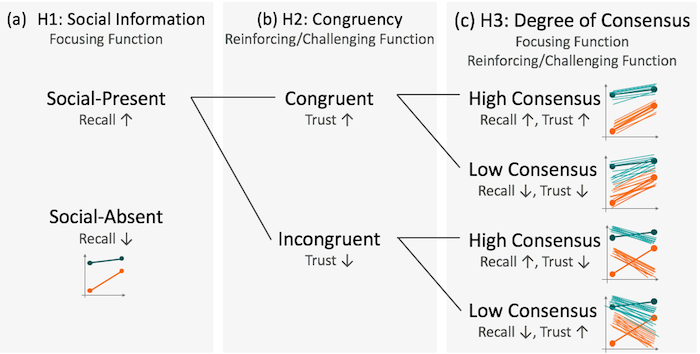Data Through Others' Eyes: The Impact of Visualizing Others' Expectations on Visualization Interpretation
IEEE Trans. Visualization & Comp. Graphics (Proc. INFOVIS) 2017Abstract
In addition to visualizing input data, interactive visualizations have the potential to be social artifacts that reveal other people’s perspectives on the data. However, how such social information embedded in a visualization impacts a viewer’s interpretation of the data remains unknown. Inspired by recent interactive visualizations that display people’s expectations of data against the data, we conducted a controlled experiment to evaluate the effect of showing social information in the form of other people’s expectations on people’s ability to recall the data, the degree to which they adjust their expectations to align with the data, and their trust in the accuracy of the data. We found that social information that exhibits a high degree of consensus lead participants to recall the data more accurately relative to participants who were exposed to the data alone. Additionally, participants trusted the accuracy of the data less and were more likely to maintain their initial expectations when other people’s expectations aligned with their own initial expectations but not with the data. We conclude by characterizing the design space for visualizing others’ expectations alongside data.
Citation
BibTeX
@article{others-expectations-2017,
title = {Data Through Others' Eyes: The Impact of Visualizing Others' Expectations on Visualization Interpretation},
author = {Kim, Yea-Seul and Reinecke, Katharina and Hullman, Jessica},
year = 2018,
journal = {IEEE Transactions on Visualization and Computer Graphics},
volume = 24,
number = 1,
pages = {760--769},
doi = {10.1109/TVCG.2017.2745240}
}

